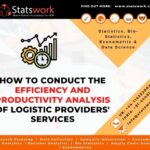Big data in retail industries & retail business analytics
Introduction:
The retail industry plays a vital role in delivering the finished goods to the end-users. This industry lends a hand to satisfy the customer demands based on the stocks available currently in the retail shops and showrooms. In the retail industry, data regarding shipments, billing, customer feedback about the specific product, available stocks, and limited stocks for the season matters for the upcoming days. Big Data effectively planted its root to avoid the complex computations in the retail industry to predict and analyses this large amount of quantitative data.
BIG DATA:
The terminology Big data sounds familiar in this decade. Because Humans are surrounded by data everywhere. To manage that much of data Big data is accessed by many Data analysts and Specialists the data generated every second. In the retail industry, Big data support through data from Retail managers, retailing researchers, policymakers, investors, and retail educators.
Based on data collected from these higher officials, the analyst will conclude the results for enhancement of the Retail industry and figure out the conflict in the retail industry if any currently exists. [1]
For instance, Walmart manages and controls over 11,000 stores across over 25 countries. Daily, it serves more than 35 million customers. Individual users have evolved into walking data producers on a micro basis.
Big data in retail industries:
The need for Big data in the Retail industry is to know customers’ satisfaction when it comes to online purchases. The strategic decisions of the customer may be hidden in the online purchasing schemes. To figure out the difficulties, Big data will manipulate the customer data to figure out the similar user and grasp the user into the retail web.
For instance, Flipkart and Amazon use Recommendation systems to know the user intention and suggest the product to the user which another similar user purchased. [2]
Big data in business analytics of retail industries in recent decades:
Based on the MapReduce technique, the research paper analyzed customer satisfaction via Supply chain management and analytics. MapReduce stimulates the necessary items for the shop and obtains the limited products which don’t require that much priority or the product may not prefer by the customers to buy. [3]
In this decade, after the rise of Big data analytics, many complex platforms become efficient based on automatic computations that provide accurate results in a limited time with less manpower.
[4]. Augmented Reality and AI systems are efficiently implemented in the Retail industry to estimate all the necessary data for future forecasting for the sake of the organization.
FIGURE: [4] Example to show how it logical explains a computational method for mapping the consumer experience in the retail industry, which is based on the big data framework. Is shown below (both offline and online) are used in the model, and they are critical in creating a positive consumer experience. Marketing 4.0 implementation is aided by technologies such as big data, artificial intelligence, machine learning, and the Internet of Things.

TABLE 1. Concepts and Methodologies for Retail Industry based on Big Data Analytics.
| S.NO | METHODS & TOOLS | PURPOSES |
| 1. | MapReduce | To reduce the unwanted elements and maintain the interlinked or mapped stocks and items. |
| 2 | POS manipulation | To estimate the point of sales based on the festive seasons, customer requirements, and availability of stocks. |
| 3 | Spark | Open source analytics tool based on Hadoop to promote more accuracy when possessing more confusion matrix of retail data |
| 4 | CF analysis | To estimate the cash flow from the origin of the product to end-user |
| 5 | Hybrid analysis | To drive the runtime data in the retail industry |
| 6 | AR analysis | Account receivable analysis to predict the annual revenue based on the sold products. |
Conclusion:
In upcoming decades, Data rule the World. Data will determine the business strategies of an organization and employee growth, customer insights, and stock details. Big data leads the retail industry on the best track to avoid unnecessary stocks, reducing and eliminating the revenue.
Future scope:
1. Using the Recommendation systems based on the Social Platforms will ignite the retail industry and customer insights.
For instance, the Retail industry in Pharmaceuticals effectively producing medicines and vaccinations according to the Time series data. [5]
2. Many organizations hire sales department employees based on their social media marketing knowledge, particularly enhancing the organization’s growth. [6]
References:
- Marnik G. Dekimpe, Retailing and retailing research in the age of big data analytics, International Journal of Research in Marketing, Volume 37, Issue 1, 2020.
- Ying, Song, et al. “Managing big data in the retail industry of Singapore: Examining the impact on customer satisfaction and organizational performance.” European Management Journal (2020).
- Verma, Neha, Dheeraj Malhotra, and Jatinder Singh. “Big data analytics for retail industry using MapReduce-Apriori framework.” Journal of Management Analytics 7.3 (2020): 424-442.
- Sahay, Manisha, and Kanchan Patil. “Marketing 4.0–Mapping the Customer Journey through Big Data Analysis.”
- Zhan, Yuanzhu, et al. “A social media analytic framework for improving operations and service management: A study of the retail pharmacy industry.” Technological Forecasting and Social Change 163 (2021): 120504.
- Harrigan, Paul, et al. “Identifying influencers on social media.” International Journal of Information Management 56 (2021): 102246.

 Previous Post
Previous Post Next Post
Next Post